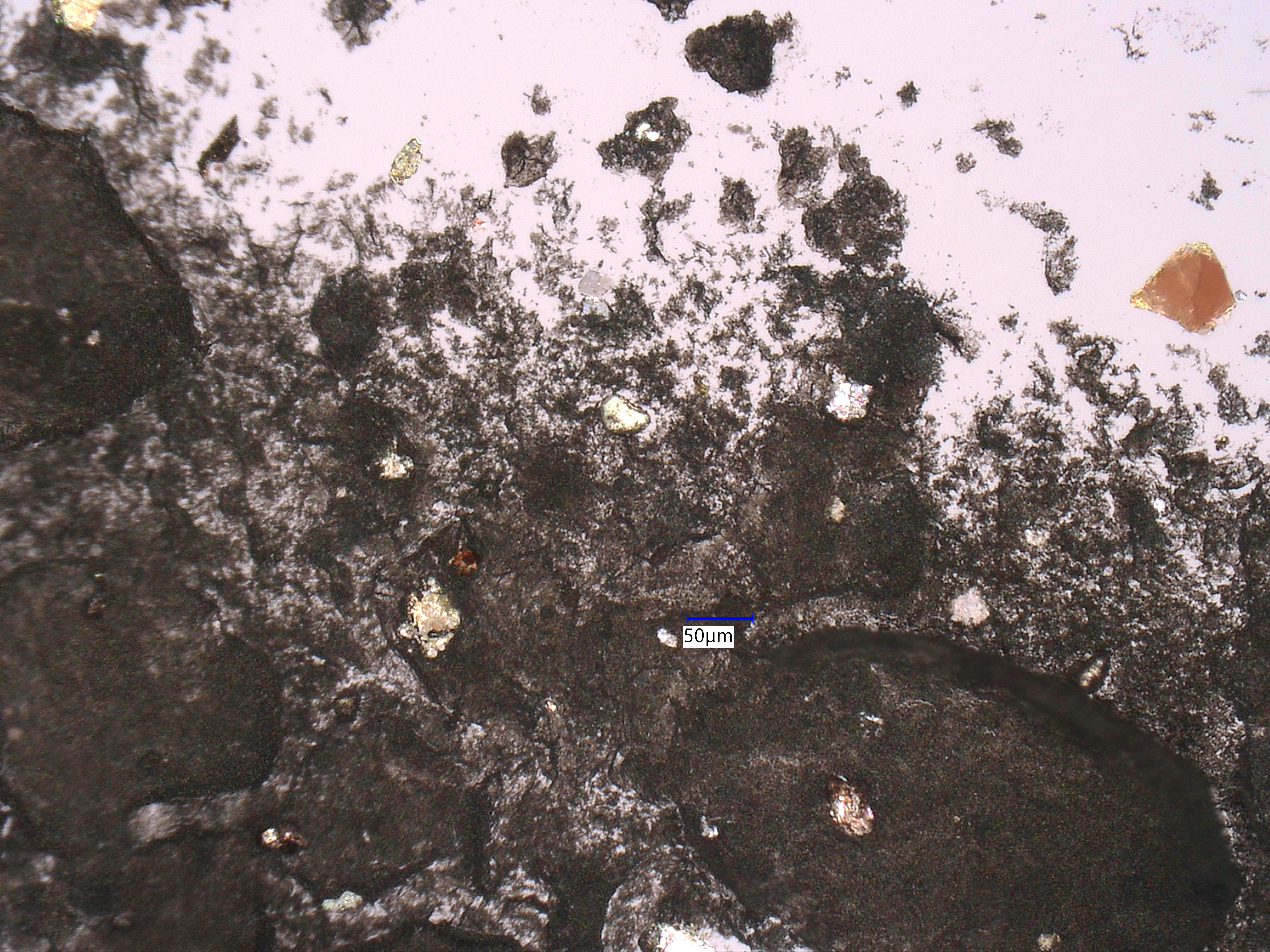Agglomerated Soot from a Lithium-ion Battery Fire
This is an agglomerated soot particle from a lithium-ion
battery fire collected with 3M Scotch Brand Magic Tape.
The sample has been cleared and is mounted in resin. The light particles in the
image are mineral grains from the ambient environment. These particles were on the
outside of a garage door. The battery of an electric golfcart in the garage had
ignited. Note the globular nature
of the large agglomerates. These particles travel as balloons of soot and condensed
hydrocarbons. On the tapelift they appear as regions
outlined in black boundaries.
Reflected Darkfield Illumination
Definition/Function:
Lithium-ion battery fires tend to be quite hot. The soot agglomerates exhibit resonable
reflectivity.
Significance in the Environment:
Characteristic Features:
Associated Particles:
References:
Premnath, Vinay, Yanyu Wang, Nolan Wright, Imad Khalek, and Steven Uribe, “Detailed
characterization of particle emissions from battery firesâ€, AEROSOL SCIENCE AND
TECHNOLOGY, vol 56, no. 4, pp 337-354, 2022
Bugryniec, Peter J., Eric G. Resendiz, Solomon M. Nwophoke, Simran Khanna, Charles
James, Solomon F. Brown, “Review of gas emissions from lithium-ion battery thermal
runaway failure—Considering toxic and flammable compoundsâ€, JOURNAL OF ENERGY
STORAGE, vol. 87, March 2024.
Larsson, Fredrik, Petra Andersson, Per Blomqvist, and Bengt-Eric Mellander, “Toxic
fluoride gas emissions from lithium-ion battery firesâ€, SCIENTIFIC REPORTS, vol. 7,
August 2017.
Rappsilber, Tim, Nawar Yusfi, Simone Kruger, Sarah-Katharina Hahn, Tim-Patrick Felinger,
Jonas Krug von Nidda, and Rico Tschirschwitz, “Meta-analysis of heat release and smoke
gas emission during thermal runaway of lithium-ion batteriesâ€, JOURNAL OF ENERGY
STORAGE, vol. 60, January 2023.
Kainat, Sana, Junaid Answer, Abdul Hamid, Nafisa Gull, Shahzad Maqsood Khan,
“Electrolytes in lithium-ion batteries: advancements in the era of twenties
(2020’s)â€, MATERIALS CHEMISTRY AND PHYSICS, vol. 313, February 2024


